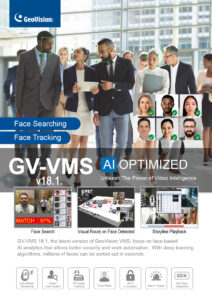![]()
Dual spectrum cameras have been used in niche verticals for some time, such as, healthcare, fire detection and oil and gas. However, they now find themselves thrust into the spotlight due to the COVID-19 pandemic that has spread to most countries around the world.
Some verticals have implemented dual spectrum cameras as a solution that can be used to detect elevated temperatures for people entering locations such as, offices, stations and airports. This is because an elevated temperature, or in other words a fever, is one of the key symptoms of COVID-19.
Dual spectrum cameras refer to how the camera makes use of the visible and infrared spectrum. Visible light is that which can be seen by the human eye and only forms a small part of the electromagnetic spectrum, being the only part the human eye can actually see. Infrared on the other hand is invisible to the human eye and is used by thermal image cameras to detect infrared radiation, making them very effective and efficient at detecting elevated temperatures.
Elevated temperature detection contributes to the fight against COVID-19
By making use of the function of detecting elevated temperatures in the general population, dual spectrum cameras are solutions different sectors and verticals are turning to in order to keep their customers, and staff safe in a world beset by COVID-19. The demand for dual spectrum cameras is heightened because of their greater accuracy in elevated temperature detection than regular thermometers. The accuracy of dual spectrum cameras can be greatly increased when they’re combined with a blackbody calibration unit in the field of view to provide a temperature reference point.
The benefit of detecting elevated temperatures as a tool for combatting the spread of COVID-19 has led some security companies to quickly develop integration support for dual spectrum cameras into their VMS (Video Management Software). The VMS makes use of open cloud software to ensure that the end-user avoids being trapped in a technology dead end, and supports remote viewing, which is in high demand due to COVID-19.

The benefits of an open cloud platform and quick integration
The open cloud platform allows for integration of new technologies (such as dual spectrum cameras) either by that company or by third parties. It avoids the customer ending up trapped in a technology dead end. The customer does not need to worry about being trapped by the vendor or dealing with obsolescence. The cloud platform fundamentally transmits the video to the cloud and inherently supports remote viewing – this is very useful right now.
Testing and integrating a series of thermal cameras at diverse price points, all with varying levels of accuracy, the outcome was that dual spectrum cameras with the blackbody calibration unit performed with better accuracy than ones without.
The quick support for this advanced thermal technology demonstrates the future proof nature of this service. Integration of new technologies, new cameras, and new capabilities are core to the open cloud platform. This is a great example of being able to rapidly deliver a solution, in response to an unexpected situation, with a technology that could prove to be very important. This is only possible with an open cloud platform.
Quick implementation of dual spectrum cameras for elevated temperature monitoring into VMS has majorly benefitted industries around the world, as they can now implement an elevated temperature checking solution into their VMS. This gives industries greater control for building management of offices, buildings and transportation hubs, to detect suspected COVID-19 cases before they can enter an area where the virus could spread or cause an outbreak, putting dual spectrum cameras on the frontline in the fight against the pandemic.
Adapted from: a&s Magazine



































































